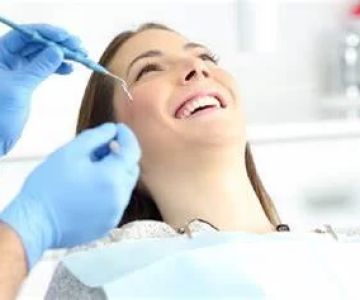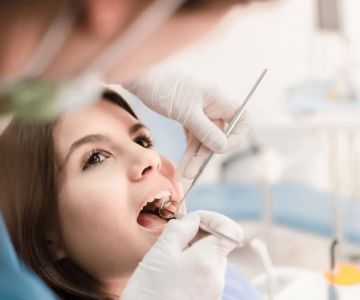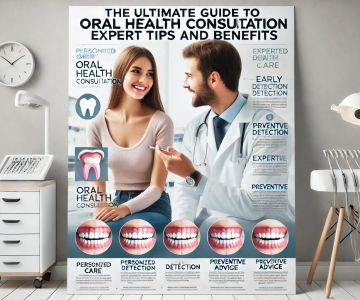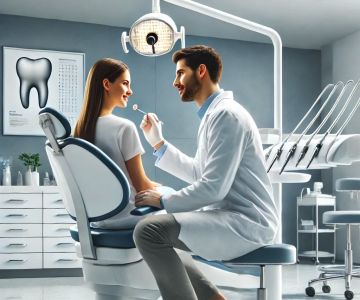How to Check for Signs of Oral Cancer at Home: A Guide to Self-Examination
Oral cancer can be a silent and insidious condition, often going unnoticed until it reaches an advanced stage. As someone who values preventive health, I’ve come to realize that early detection is key to increasing the chances of successful treatment. While it’s essential to visit a dentist or doctor regularly for professional exams, I’ve learned that performing a self-check at home can also be incredibly valuable. In this article, I’ll walk you through how to check for signs of oral cancer at home, what to look for, and when to seek professional advice.
1. Understanding Oral Cancer: Why Home Check-Ups Matter
Oral cancer includes cancers of the mouth, lips, gums, tongue, and the floor and roof of the mouth. Though it’s less common than other types of cancer, its impact can be significant. The American Cancer Society estimates that in 2021, over 54,000 people in the U.S. would be diagnosed with oral or oropharyngeal cancer. The survival rate for oral cancer is directly tied to how early it’s detected, which is why performing regular self-checks is so important.
During my own journey to understand oral cancer, I found that many of the signs can be easy to overlook, especially if they appear gradually. That’s why incorporating simple self-examinations into my routine has given me peace of mind, allowing me to act quickly if something unusual is spotted. A timely diagnosis can make a huge difference, so let’s dive into the steps you can take to check for early warning signs of oral cancer from the comfort of your own home.
2. Step-by-Step Guide: How to Perform a Self-Examination for Oral Cancer
Checking for oral cancer at home doesn’t require special tools or equipment. In fact, you can do it with just a mirror and good lighting. Here’s how I go about it:
- Step 1: Find a Well-Lit Area
Start by standing in front of a well-lit mirror, preferably with natural light or a bright lamp. Make sure the area is well-lit so you can see inside your mouth clearly. - Step 2: Look at Your Face and Neck
Begin by checking your face and neck. Look for any unusual lumps, swelling, or asymmetry. Gently press around your jawline, neck, and under your chin to feel for any abnormalities. - Step 3: Inspect Your Lips and Inside of Your Mouth
Pull your lips outwards to examine the front and back of them. Look for sores, red or white patches, or unusual growths. Check the inside of your mouth for similar signs, especially on the roof of your mouth and the inside of your cheeks. - Step 4: Examine Your Gums
Check your gums for any lumps, redness, or sores that don’t heal. Gently pull back your cheeks to inspect the gumline, as well as the tissue around your teeth. - Step 5: Examine Your Tongue
Stick out your tongue and look at all surfaces, including the top, bottom, and sides. Check for any white or red patches, lumps, or sores. Don’t forget to check underneath your tongue as well. - Step 6: Feel for Lumps or Swelling
Use your fingers to gently feel the roof of your mouth, the floor of your mouth, and under your jaw. You should look for any unusual lumps, tenderness, or swelling.
3. Common Signs of Oral Cancer to Look For
While performing your self-examination, it’s important to know what signs might indicate oral cancer. Here are some of the key symptoms to watch for:
- Persistent sores or ulcers: A sore that doesn’t heal after a few weeks could be a warning sign. This is especially true if the sore is painful or accompanied by other symptoms.
- White or red patches: Patches of white or red tissue inside your mouth or on your gums, tongue, or lips can indicate precancerous or cancerous growth.
- Lumps or thickening: If you feel lumps or thickened tissue anywhere in your mouth, jaw, or neck that doesn’t go away, it’s worth having checked out by a professional.
- Pain or tenderness: Unexplained pain or tenderness, especially when chewing or swallowing, can sometimes signal oral cancer.
- Changes in your voice or speech: A persistent sore throat, hoarseness, or difficulty speaking could indicate an issue with the mouth or throat.
- Difficulty swallowing: If you find it hard to swallow food or liquids, or if there’s a feeling of something stuck in your throat, it’s important to seek medical advice.
4. When to Seek Professional Help
While self-exams can be an essential tool for early detection, it’s equally important to understand when to seek medical help. If you notice any of the signs mentioned earlier that don’t go away after two weeks, I recommend scheduling an appointment with a dentist or doctor right away. They will perform a more thorough examination and may conduct additional tests, such as a biopsy or imaging, to determine if there is any cancerous activity.
If you have risk factors such as tobacco use, heavy alcohol consumption, or a family history of oral cancer, you may need to be more vigilant about self-checks and regular visits to your dentist. Your dentist is trained to detect early signs of oral cancer and can advise you on the best course of action.
5. How to Reduce Your Risk of Oral Cancer
While self-checking for oral cancer is essential, prevention is just as important. I’ve learned that adopting a healthy lifestyle can significantly reduce the risk of developing oral cancer. Here are a few steps that can help:
- Avoid tobacco: Whether smoking or using smokeless tobacco, avoiding these products is one of the best ways to lower your risk.
- Limit alcohol consumption: Heavy alcohol use increases the risk of oral cancer, so it’s essential to drink in moderation or avoid alcohol entirely.
- Practice good oral hygiene: Brushing your teeth regularly, flossing, and visiting your dentist for routine cleanings can help keep your mouth healthy and reduce the risk of developing oral issues.
- Eat a healthy diet: A balanced diet rich in fruits, vegetables, and antioxidants can help keep your body healthy and fight off harmful cells.
6. The Importance of Regular Dental Visits
While checking for oral cancer at home is important, regular dental check-ups are vital for early detection. I make it a point to visit my dentist at least once a year for a thorough oral examination. Dentists are specially trained to detect signs of oral cancer that I may miss during my self-examination.
During these visits, your dentist will check your mouth, gums, and tongue for any abnormal changes and may perform screenings for oral cancer. If you have any concerns or notice anything unusual, don’t hesitate to bring it up with your dentist during your appointment.






 Westgate Dental Arts
Westgate Dental Arts Coventry Family Dental
Coventry Family Dental Familia Dental
Familia Dental Dr. Daniel S. Fife, DDS
Dr. Daniel S. Fife, DDS Dentistry At Suburban Square: Michael I. Wollock, DMD
Dentistry At Suburban Square: Michael I. Wollock, DMD Comfort Care Dental
Comfort Care Dental The Importance of Oral Health Education During Pregnancy for a Healthy Pregnancy
The Importance of Oral Health Education During Pregnancy for a Healthy Pregnancy Why Skipping Dental Checkups Can Lead to Bigger Oral Health Problems
Why Skipping Dental Checkups Can Lead to Bigger Oral Health Problems Best Tips for Brushing Your Teeth Properly for Healthy Gums: Essential Techniques for Oral Health
Best Tips for Brushing Your Teeth Properly for Healthy Gums: Essential Techniques for Oral Health Advantages of Porcelain Dental Restorations
Advantages of Porcelain Dental Restorations How Can Diabetes Cause Tooth and Gum Problems? Preventing and Managing Oral Health Issues
How Can Diabetes Cause Tooth and Gum Problems? Preventing and Managing Oral Health Issues Healthy Habits for Promoting Good Oral Health and Hygiene: Tips for a Healthy Smile
Healthy Habits for Promoting Good Oral Health and Hygiene: Tips for a Healthy Smile